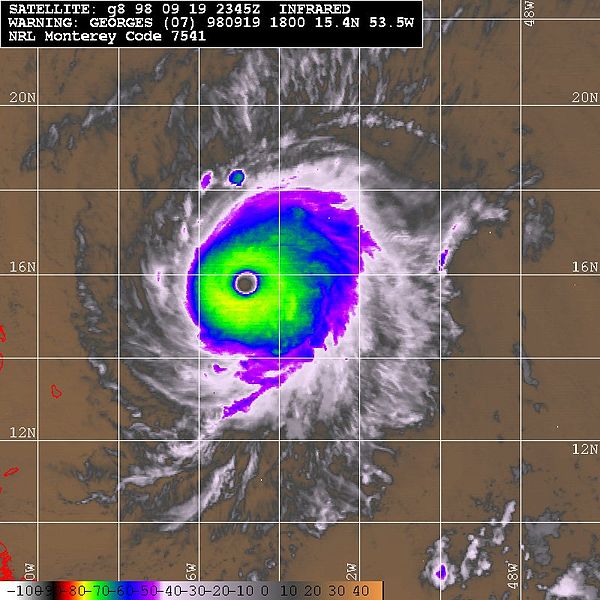On Sept. 25, 1998 Hurricane Georges roared through the Florida Keys, inflicting $200 million in damage through heavy rainfall and storm surge. Georges had already left a trail of destruction throughout the Caribbean, especially in the Leeward and Virgin Islands, Puerto Rico, Hispanola, and Cuba killing more than 500 people along the way. After raging through the Keys, Georges made a turn in the Gulf of America and made landfall in Mississippi three days later. Loitering near the coast, the storm continued to dump copious rains on the panhandles of Mississippi, Alabama, and Florida bringing the US damage total to $2.8 billion.
Hurricane Research Division scientists participated in some eleven flights into the storm from its peak in the tropical midAtlantic to its landfall in Mississippi. Some of the research papers to come from those missions are:
Dunion, J. P., S. H. Houston, C. S. Velden, M. D. Powell, 2002: Application of surface-adjusted GOES low-level cloud-drift winds in the environment of Atlantic tropical cyclones. Part II: Integration into surface wind analyses. Mon. Wea. Rev., 130, 1347–1355.
doi: http://dx.doi.org/10.1175/1520-0493(2002)1302.0.CO;2
Eastin, M. D., W. M. Gray, P. G. Black, 2005: Buoyancy of convective vertical motions in the inner core of intense hurricanes. Part II: case studies. Mon. Wea. Rev., 133, 209–227.
doi: http://dx.doi.org/10.1175/MWR-2849.1
Carsey, T. P., H. E. Willoughby, 2005: Ozone Measurements from Eyewall Transects of Two Atlantic Tropical Cyclones. Mon. Wea. Rev., 133, 166–174.
doi: http://dx.doi.org/10.1175/MWR-2844.1
Kepert, J. D., 2006: Observed Boundary Layer Wind Structure and Balance in the Hurricane Core. Part I: Hurricane Georges. J. Atmos. Sci., 63, 2169–2193.
doi: http://dx.doi.org/10.1175/JAS3745.1
